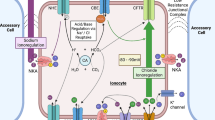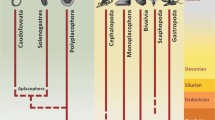Abstract
This study aimed to elucidate the role of urea synthesis in the slender African lungfish Protopterus dolloi in detoxifying ammonia after feeding. There were significant increases in the rate of ammonia excretion in P. dolloi between hours 6 and 15 after feeding. Simultaneously, there were significant increases in urea excretion rates between hours 3 and 18. Consequently, the percentage of total nitrogen (N) excreted as urea N increased to ~60% between hours 12 and 21 post-feeding. Hence, after feeding, the normally ammonotelic P. dolloi became ureotelic. Approximately 41% of the N intake from food was excreted within 24 h by P. dolloi, 55% of which was in the form of urea N. At hour 12 post-feeding, the accumulation of urea N was greater than the accumulation of ammonia N in various tissues, which indicates that feeding led to an increase in the rate of urea synthesis. This is contrary to results reported previously on the infusion of ammonia into the peritoneal cavity of the marine dogfish shark, in which a significant portion of the exogenous ammonia was excreted as ammonia. In contrast, feeding is more likely to induce urea synthesis, which is energy intensive, because feeding provides an ample supply of energy resources and leads to the production of ammonia intracellularly in the liver. The capacity of P. dolloi to synthesize urea effectively prevented a postprandial surge in the plasma ammonia level as reported elsewhere for other non-ureogenic teleosts. However, there was a significant increase in the glutamine content in the brain at hour 24, indicating that the brain had to defend against ammonia toxicity after feeding.







Similar content being viewed by others
Abbreviations
- C :
-
carbon
- CPS :
-
carbamoyl phosphate synthetase
- N :
-
nitrogen
- OUC :
-
ornithine–urea cycle
References
Anderson PM (1980) Glutamine- and N-acetylglutamate-dependent carbamoyl phosphate synthetase in elasmobranchs. Science 208:291–293
Anderson PM (2001) Urea and glutamine synthesis: environmental influences on nitrogen excretion. In: Wright PA, Anderson PM (eds) Fish physiology, vol 20. Nitrogen excretion. Academic Press, New York, pp 239–277
Anderson PM, Little RM (1986) Kinetic properties of cyanase. Biochemistry 25:1621–1626
Anderson PM, Broderius MA, Fong KC, Tsui KNT, Chew SF, Ip YK (2002) Glutamine synthetase expression in liver, muscle, stomach and intestine of Bostrichyths sinensis in response to exposure to a high exogenous ammonia concentration. J Exp Biol 205:2053–2065
Ballestrazzi R, Dagaro DEL (1998) Performance and nutrient retention efficiency, total ammonia and reactive phosphorus excretion of growing European sea bass (Dicentrarchus labrax) as affected by diet processing and feeding level. Aquaculture 161:55–65
Bergmeyer HU, Beutler HO (1985) Ammonia. In: Bergmeyer HU, Bergmeyer J, Graβl M (eds) Methods of enzymatic analysis, vol VIII. Academic Press, New York, pp 454–461
Brusilow SW (2002) Reviews in molecular medicine—hyperammonemic encephalopathy. Medicine 81:240–249
Cai YJ, Wermerskirchen J, Adelman IR (1996) Ammonia excretion indicated dietary protein adequacy for fish. Progressive Fish Culturist 58:124–127
Campbell JW (1991) Excretory nitrogen metabolism. In: Prosser CL (ed) Experimental and metabolic animal physiology. Comparative Animal Physiology, 4th edn. Wiley-Interscience, New York, pp 277–324
Campbell JW, Anderson PM (1991) Evolution of mitochondrial enzyme systems in fish: the mitochondrial synthesis of glutamine and citrulline. In: Hochachka PW, Mommsen TP (eds) Biochemistry and molecular biology of fishes. 1. Phylogenetic and biochemical perspectives. Elsevier, Amsterdam, pp 43–75
Chew SF, Tan FO, Ho L, Tam WL, Loong AM, Hiong KC, Ip YK(2003) Urea synthesis in the African lungfish, Protopterus dolloi—hepatic carbamoyl phosphate synthetase III and glutamine synthetase are upregulated by 6 days of aerial exposure. J Exp Biol 206:3615–3624
Chew SF, Chan NKY, Tam WL, Loong AM, Hiong KC, Ip YK (2004a) Nitrogen metabolism in the African lungfish, Protopterus dolloi, aestivating in a mucus cocoon on land. J Exp Biol 207:777–786
Chew SF, Tan FO, Ho L, Tam WL, Loong AM, Hiong KC, Ip YK (2004b) The African lungfish, Protopterus dolloi is capable of detoxifying ammonia to urea, regulating urea efflux, and reducing ammonia production when exposed to high concentrations of environmental ammonia. Physiol Biochem Zool (in press)
Chew SF, Wilson JM, Ip YK, Randall DJ (2004c) Nitrogenous excretion and defense against ammonia toxicity. In: Val A, Almedia-Val V, Randall DJ (eds) Fish physiology, vol 23. The physiology of tropical fishes. Academic Press, New York (in press)
Dosdat FAS, Meteailler R, Huelvan C, Desbruyeres E (1996) Comparison of nitrogenous losses in five teleost fish species. Aquaculture 141:107–127
Faupel RP, Seitz HJ, Tarnowski W, Thiemann V, Weiss CH (1972) The problem of tissue sampling from experimental animals with respect to freeze technique, anoxia, stress and narcosis. Arch Biochem Biophys 148:509–522
Felig P (1975) Amino acid metabolism in man. Annu Rev Biochem 44:933–955
Gelineau A, Medale F, Boujard T (1998) Effect of feeding time on postprandial nitrogen excretion and energy expenditure in rainbow trout. J Fish Biol 52:655–664
Graham JB (1997). Metabolic adaptation. In: Air-breathing fishes: evolution, diversity and adaptation. Academic Press, London, pp 223–240
Ip YK, Chew SF, Randall DJ (2001a) Ammonia toxicity, tolerance and excretion. In: Wright PA, Anderson PM (eds) Nitrogen excretion, fish physiology, vol 19. Academic Press, New York, pp 109–148
Ip YK, Lim CB, Chew SF, Wilson JM, Randall DJ (2001b) Partial amino acid catabolism leading to the formation of alanine in Periophthalmodon schlosseri (mudskipper): a strategy that facilitates the use of amino acids as an energy source during locomotory activity on land. J Exp Biol 204:1615–1624
Ip YK, Tay ASL, Lee KH, Chew SF (2004) Strategies for surviving high concentrations of environmental ammonia in the swamp eel Monopterus albus. Physiol Biochem Zool 77:390–405
Ishikawa E (1976) The regulation of uptake and output of amino acids by rat tissues. In: Weber G (ed) Advances in enzyme regulation, vol 14. Pergamon, Oxford, pp 117–136
Jayaram MG, Beamish FWH (1992) Influence of dietary protein and lipid on nitrogen and energy losses in lake trout, Salvelinus namaycush. Can J Fish Aquat Sci 49:2267–2272
Jow LY, Chew SF, Lim CB, Anderson PM, Ip YK (1999) The marble goby Oxyeleotris marmoratus activates hepatic glutamine synthetase and detoxifies ammonia to glutamine during air exposure. J Exp Biol 202:237–245
Kaushik SJ, Teles AO (1985) Effect of digestible energy on nitrogen and energy balance in rainbow trout. Aquaculture 50:89–101
Mathews DM (1975) Intestinal absorption of peptides. Physiol Rev 55:537–608
Mecke D (1985) Amino acids. In: Bergmeyer HU, Bergmeyer J, GraβlM (eds) Methods of enzymatic analysis, vol VIII. Academic Press, New York, pp 364–368
Medale F, Brauge C, Vallee F, Kaushik SJ (1995) Effects of dietary protein/energy ratio, ration size, dietary energy source and water temperature on nitrogen excretion in rainbow trout. Water Sci Res 31:185–194
Mommsen TP, Hochachka PW (1988) The purine nucleotide cycle as two temporally separated metabolic units: a study on trout muscle. Metabolism 37:552–556
Mommsen TP, Walsh PJ (1991) Urea synthesis in fishes: evolutionary and biochemical perspectives. In: Hochachka, Mommsen TP (eds) Biochemistry and molecular biology of fishes. 1. Phylogenetic and biochemical perspectives. Elsevier, Amsterdam, pp 137–163
Poll M (1961) Révision systématique et raciation géographique des Protopteridae de l’Afrique centrale. Ann Mus R Afr Centr, série in 8°, Sci Zool 103:3–50
Schröck H, Goldstein L (1981) Interorgan relationships for glutamine metabolism in normal and acidotic rats. Am J Physiol 240:E519–E525
Schröck H, Cha CJ, Goldstein L (1980) Glutamine release from hindlimb and uptake by kidney in the acutely acidotic rat. Biochem J 188:557–560
Simpson RJ, Neuberger MR, Liu TY (1976) Complete amino acid analysis of proteins from a single hydrolysate. J Biol Chem 251:1936–1940
Tay SLA, Chew SF, Ip YK (2003) The swamp eel Monopterus albus reduces endogenous ammonia production and detoxifies ammonia to glutamine during aerial exposure. J Exp Biol 206:2473–2386
Tsui TKN, Randall DJ, Chew SF, Jin Y, Wilson JM, Ip YK (2002) Accumulation of ammonia in the body and NH3 volatilization from alkaline regions of the body surface during ammonia loading and exposure to air in the weather loach Misgurnus anguillicaudatus. J Exp Biol 205:651–659
Van Weerd JH, Verastegui AM, Tijssen PAT (1995) Nitrogen excretion and determination of nitrogen and energy budgets in rainbow trout (Oncorhynchus mykiss R.) under different feeding regimes. J Appl Ichthyol 11:322–328
Wicks BJ, Randall DJ (2002a) The effect of feeding and fasting on ammonia toxicity in juvenile rainbow trout, Oncorhynchus mykiss. Aquat Toxicol 59:71–82
Wicks BJ, Randall DJ (2002b) The effect of sub-lethal ammonia exposure on fed and unfed rainbow trout: the role of glutamine in regulation of ammonia. Comp Biochem Physiol 132A:275–285
Wilkie MP (1997) Mechanisms of ammonia excretion across fish gills. Comp Biochem Physiol 118:39–50
Williamson DH (1985) Amino acids. In: Bergmeyer HU, Bergmeyer J, Graβl M (eds) Methods of enzymatic analysis, vol. VIII. Academic Press, New York, pp 341–344
Windmueller HG (1982) Glutamine utilization by the small intestine. Adv Enzymol 53:201–238
Wood CM, Part P, Wright PA (1995) Ammonia and urea metabolism in relation to fill function and acid-base balance in a marine elasmobranch, the spiny dogfish (Squalus acanthias). J Exp Biol 198:1545–1558
Yancey PH (2001) Nitrogen compounds as osmolytes. In: Wright PA, Anderson PM (eds) Fish physiology, vol 20. Nitrogen excretion. Academic Press, New York, pp 309–342
Author information
Authors and Affiliations
Corresponding author
Additional information
Communicated by I.D. Hume
Rights and permissions
About this article
Cite this article
Lim, C.K., Wong, W.P., Lee, S.M.L. et al. The ammonotelic African lungfish, Protopterus dolloi, increases the rate of urea synthesis and becomes ureotelic after feeding. J Comp Physiol B 174, 555–564 (2004). https://doi.org/10.1007/s00360-004-0444-2
Accepted:
Published:
Issue Date:
DOI: https://doi.org/10.1007/s00360-004-0444-2




